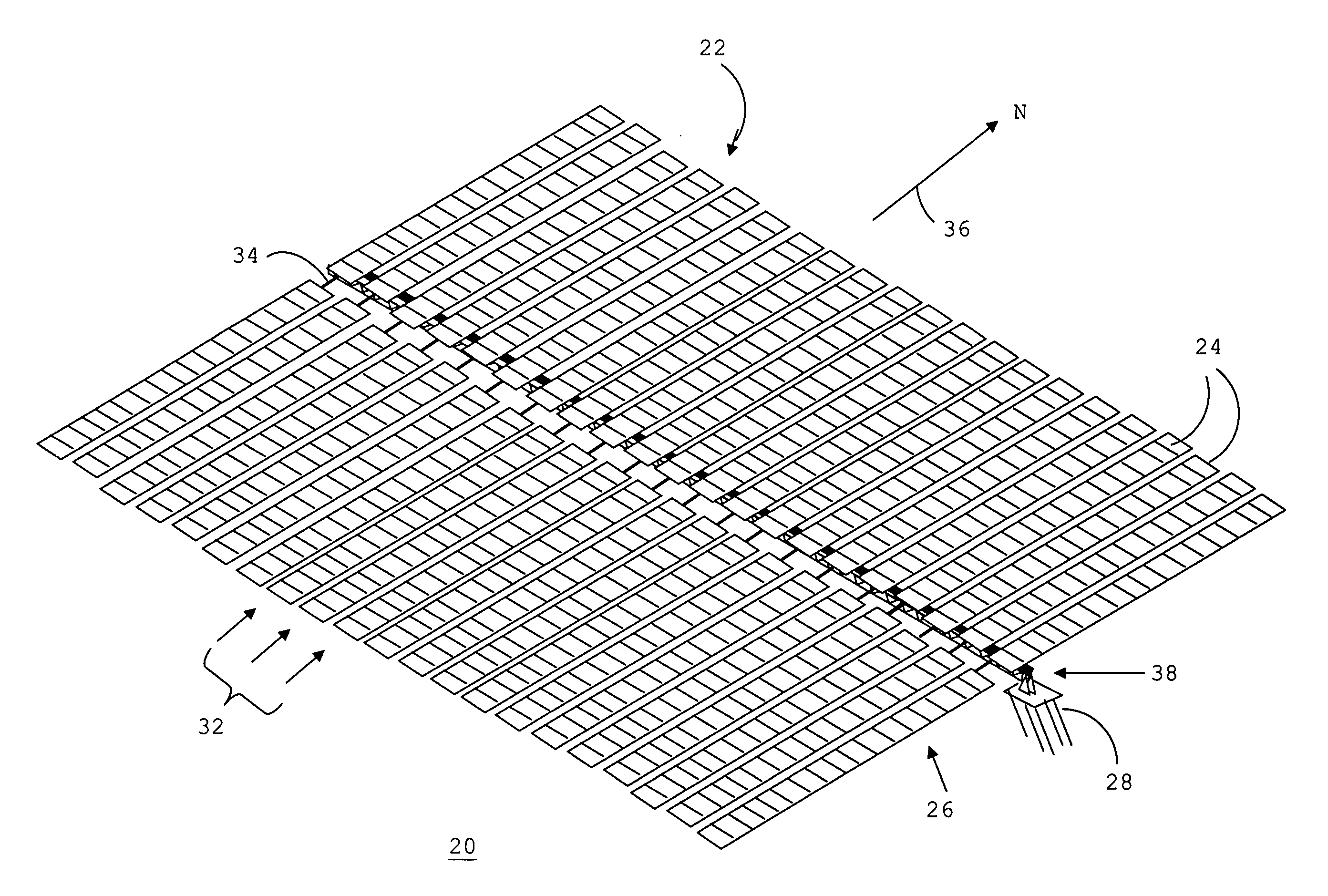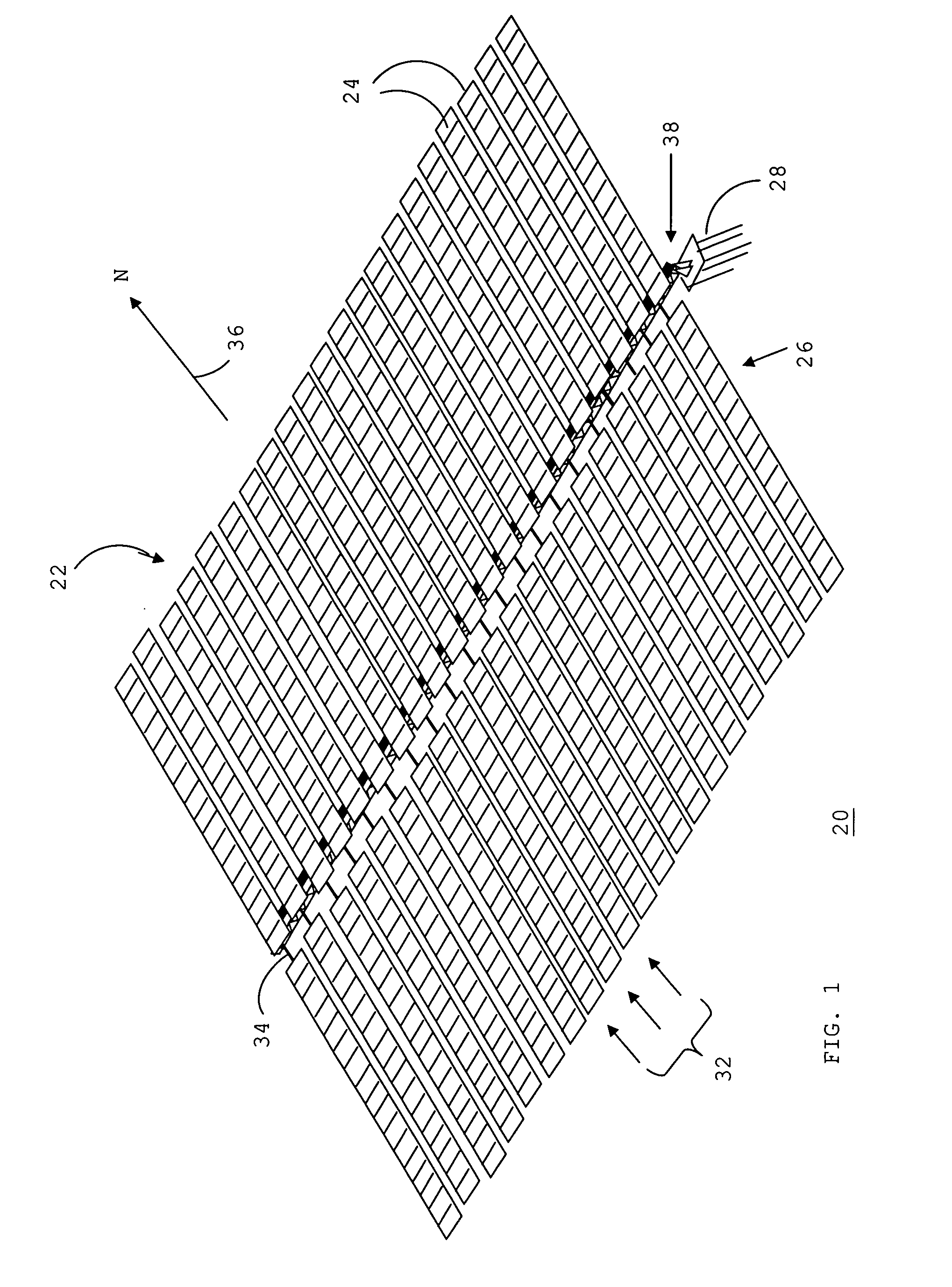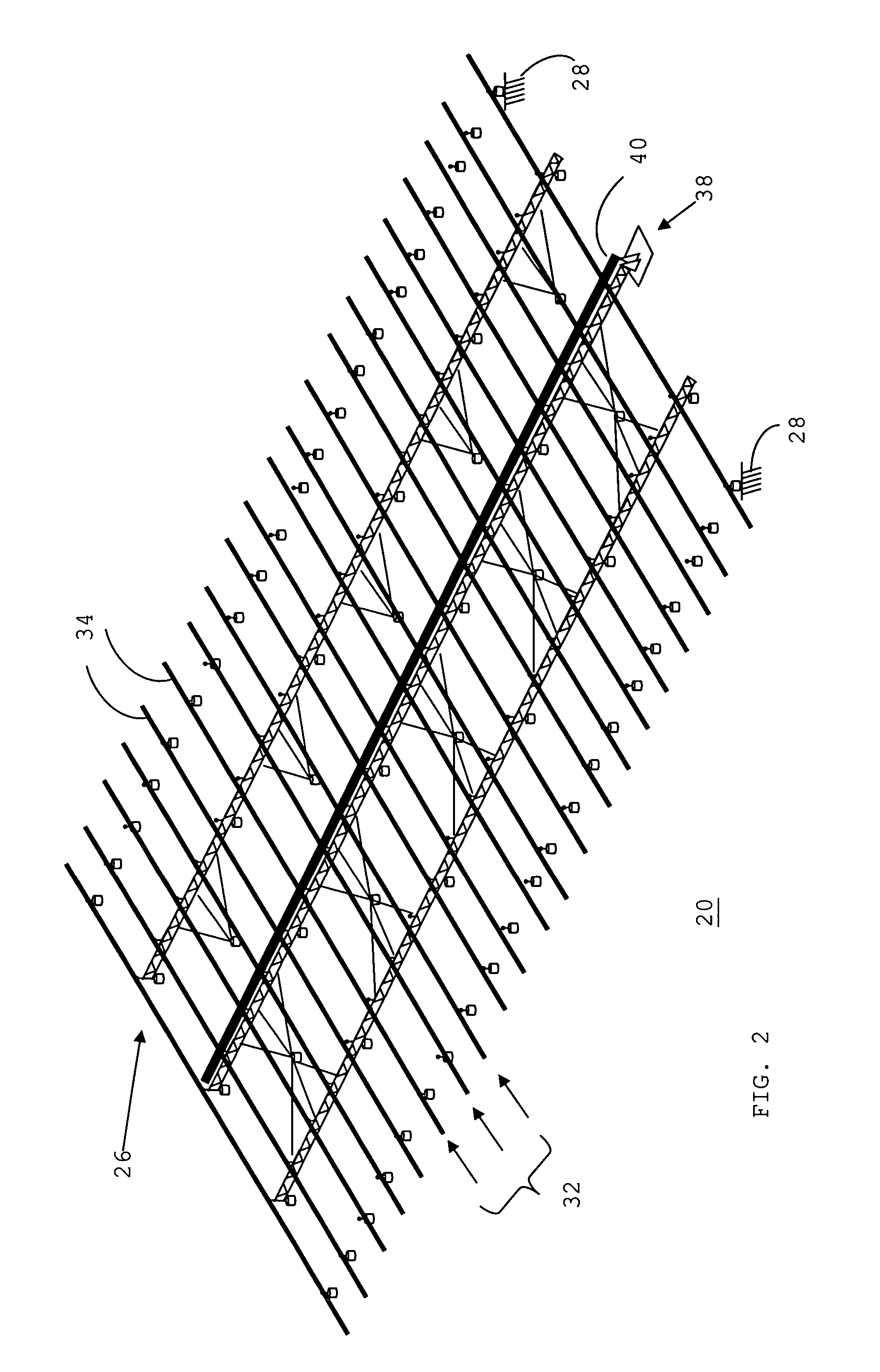Structure for supporting energy conversion modules and solar energy collection system
a technology of solar energy collection and solar energy, applied in the direction of machine supports, heat collector mounting/support, light and heating apparatus, etc., can solve the problems of affecting the cost of the support structure used to mount the solar panels of the array in the proper position, hindering the widespread introduction of solar arrays for the generation of commercial and industrial electricity, and affecting the cost. , to achieve the effect of reducing the number of concrete supports and being stable in the wind
- Summary
- Abstract
- Description
- Claims
- Application Information
AI Technical Summary
Benefits of technology
Problems solved by technology
Method used
Image
Examples
Embodiment Construction
[0028]FIG. 1 shows a perspective view of a solar energy collection system 20 for collecting solar energy in accordance with a preferred embodiment of the present invention. Solar energy collection system 20 is a single-axis solar tracking system. A single-axis tracking system represents a reasonable compromise between fixed, non-tracking, systems and multiple-axis tracking systems. That is, a single-axis tracking system achieves the benefit of an increase in efficiency over a fixed system without the undesirable complexity and cost of a multiple-axis tracking system.
[0029] System 20 generally includes an array 22 of flat, rectangular energy conversion modules 24 and an underlying support structure 26 for supporting array 22 above a surface 28 of the earth. System 20 moves array 22 of energy conversion modules 24 around a single axis, and therefore approximates tracking of the actual position of the sun.
[0030] Each of energy conversion modules 24 incorporates at least one device, e...
PUM
 Login to View More
Login to View More Abstract
Description
Claims
Application Information
 Login to View More
Login to View More - R&D
- Intellectual Property
- Life Sciences
- Materials
- Tech Scout
- Unparalleled Data Quality
- Higher Quality Content
- 60% Fewer Hallucinations
Browse by: Latest US Patents, China's latest patents, Technical Efficacy Thesaurus, Application Domain, Technology Topic, Popular Technical Reports.
© 2025 PatSnap. All rights reserved.Legal|Privacy policy|Modern Slavery Act Transparency Statement|Sitemap|About US| Contact US: help@patsnap.com



